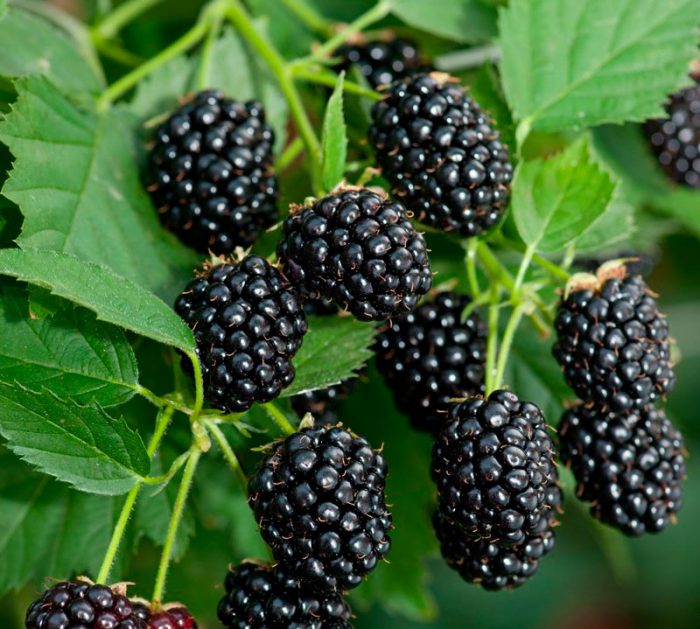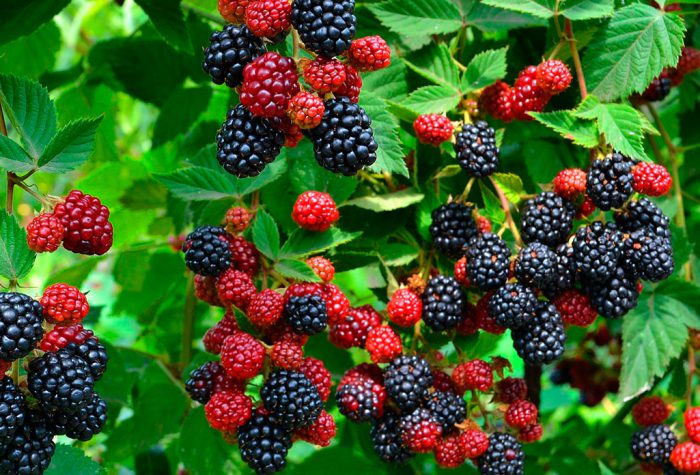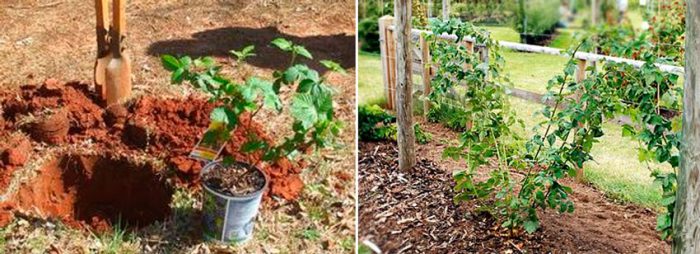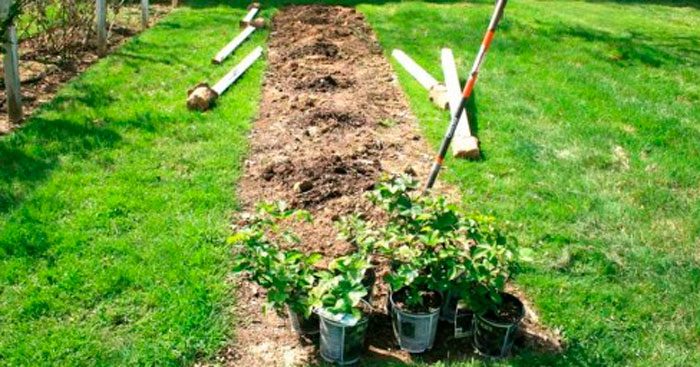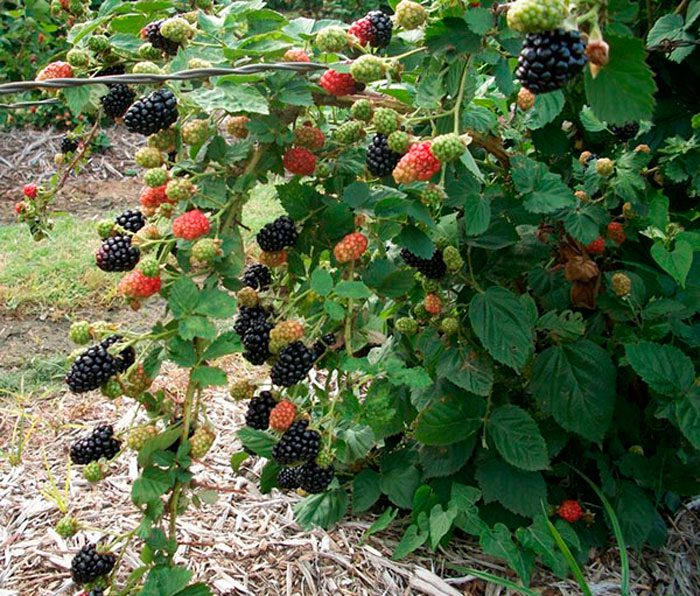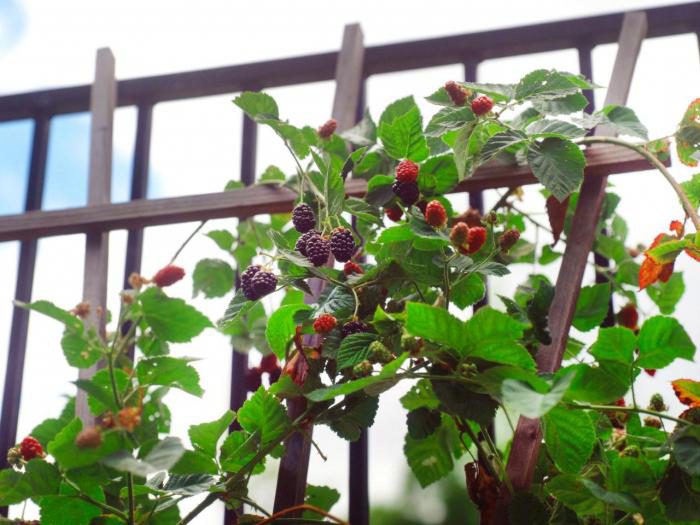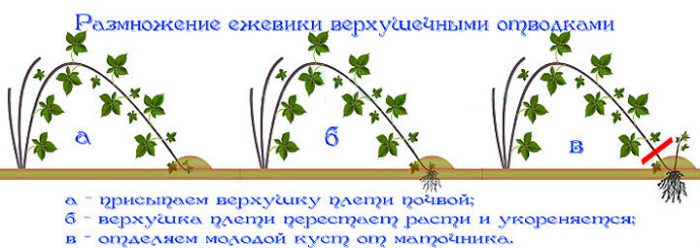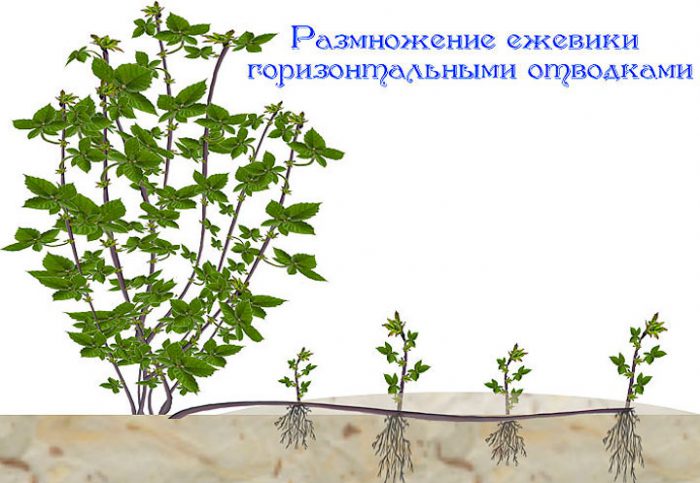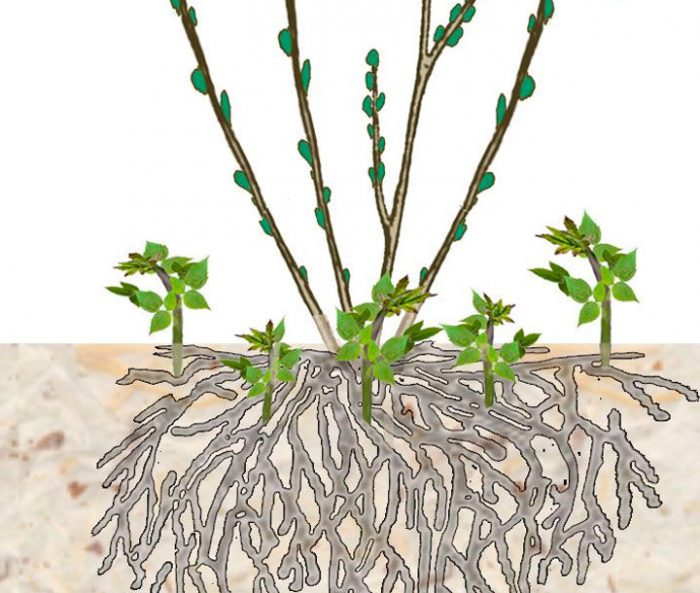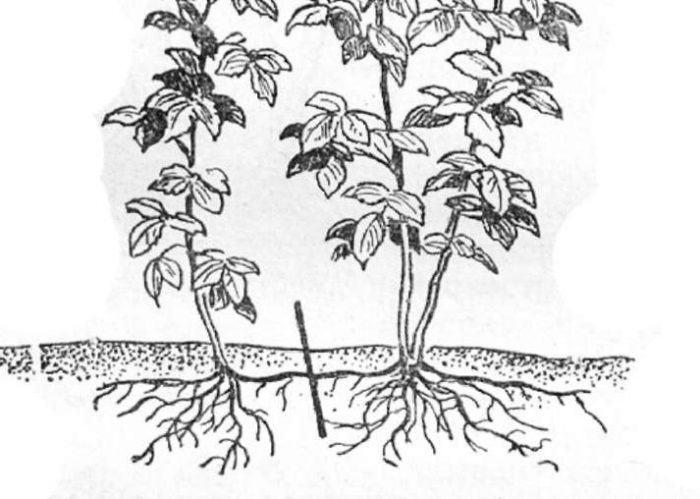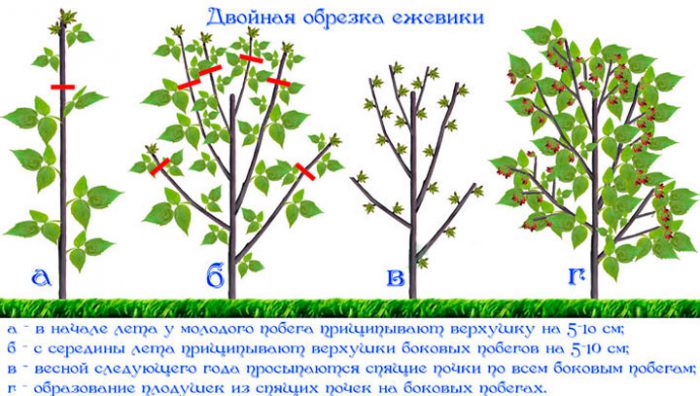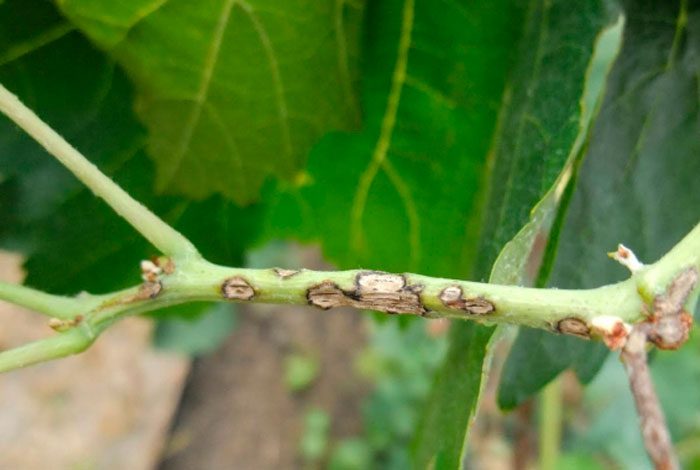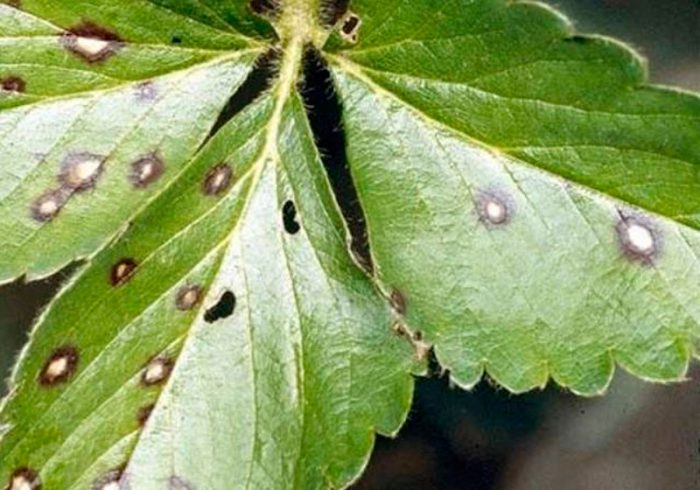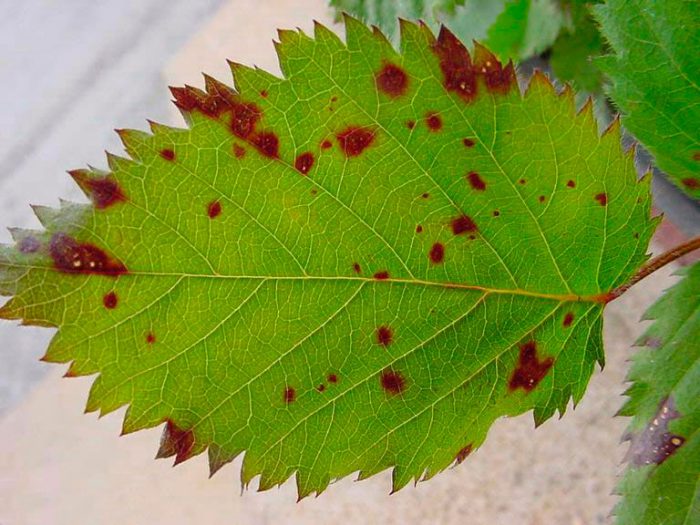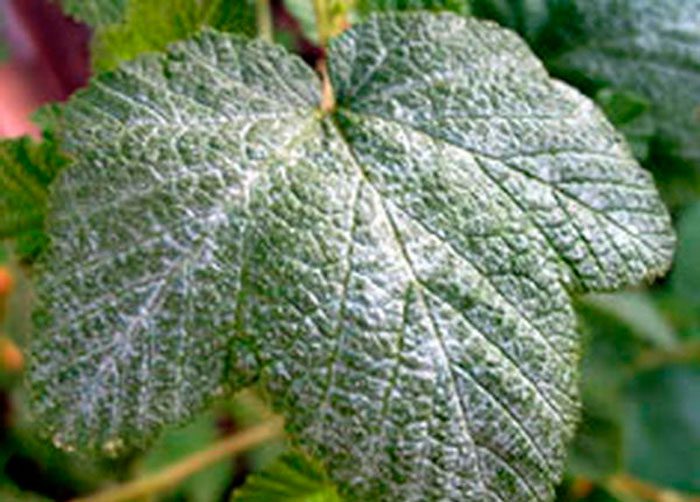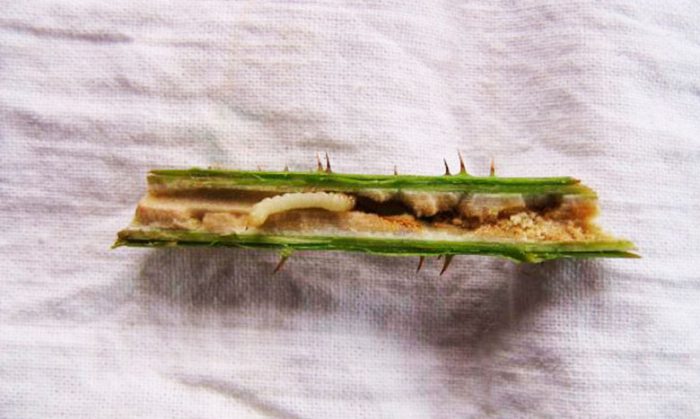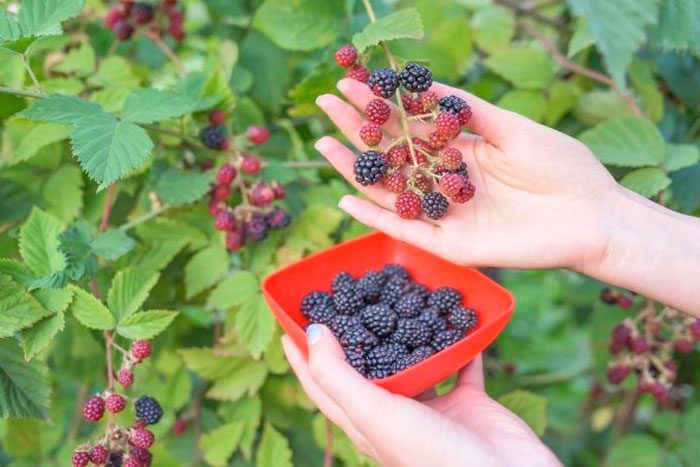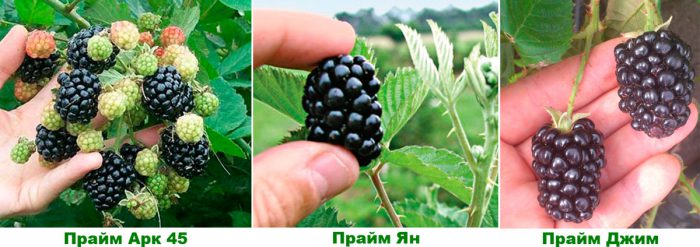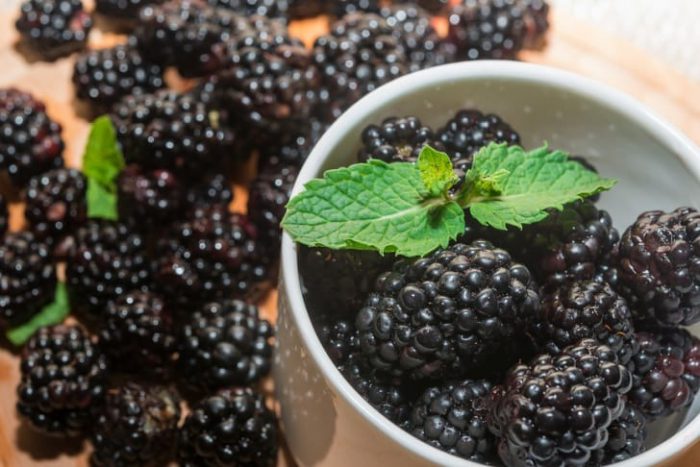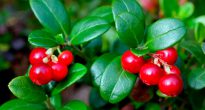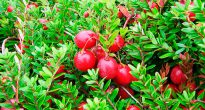Blackberry is considered a subgenus of the genus Rubus, which belongs to the pink family. In mid-latitudes, gardeners most often cultivate bushy blackberry (Rubus fruticosus), it is still very often called kumanika, and also blueberry blackberry (Rubus caesius) - in Ukraine called "ozhina". This plant is a close relative of the very useful raspberry, but it is not grown on an industrial scale in European countries. However, in America, blackberries are considered a very popular berry crop. Mexico is the world leader in blackberry cultivation, with all berries exported to Europe and America. In Russia, blackberries, as a rule, grow only in the wild; this culture is not particularly popular among gardeners. However, every year it becomes more and more popular, since the fruits of blackberries are healthier and tastier than raspberries.
Content
Features of garden blackberries
Garden blackberry is a shrub or shrub vine. This plant has a very flexible stem shoot, on the surface of which there are many sharp thorns and a perennial rhizome. To date, breeders have obtained varieties that do not have thorns, they are consistently productive and resistant to diseases and pests. If there is a support next to the bush, then the height of its shoots can reach about 200 centimeters. Five to seven-part or triple pale green toothed leaf plates have pubescence both on the front and on the seamy surface. During flowering, this plant is a honey plant. The diameter of the white flowers is about 30 mm, their opening is observed from June to August, and this completely depends on the climatic conditions of the region. Juicy fruits ripen in August, they are black, and on the surface there is a bloom of a bluish color.
Planting blackberries in open ground
What time to plant
Growing a blackberry is quite difficult, especially for an inexperienced gardener. However, the fruits of this culture are incredibly healthy and very tasty, so the efforts put into mastering the unusual blackberry agricultural technology will not be spent in vain.Experts advise planting blackberries in open ground in spring from the last days of April to the first - May after the soil warms up well. At the same time, autumn planting is not recommended for this crop. Blackberries prefer sunny locations that must be protected from gusts of wind. The fact is that the wind can damage the foliage and fruits of the plant, as well as interfere with normal pollination. It is recommended to choose a site for planting not on a flat area, but on a western or southern slope, in this case the plant will be protected from the north and east wind. Breathable, drained nutrient-rich loam is best suited for such a crop, and it can also be grown in sandy loam soil. If it is planted on carbonate soil, then the bush will lack iron and magnesium. The recommended soil acidity is pH 6.
Before proceeding with the direct planting of the plant, it is necessary to ensure that the soil meets all the agrotechnical requirements of the blackberry. It is recommended to start the preparation of the site in the autumn, all weeds must be removed from it, as well as pathogenic microorganisms and all pests must be destroyed. In the event that the garden soil is systematically fertilized, then fertilizing specifically for blackberries will be superfluous, since the overfed plant begins to actively increase the green mass, which negatively affects fruiting. However, if a different crop was grown on the site before the blackberry, then the soil can be severely depleted. In this regard, during the preparation of planting holes or furrows, the upper nutrient layer of the soil must be thrown aside. It must be combined with 10 kilograms of compost, manure or humus, 25 grams of potassium sulfate and 15 grams of superphosphate per 1 m2 plot. This soil mixture during planting of blackberries will need to fill its root system.


Watch this video on YouTube
Planting blackberries in spring
If you want to grow a healthy strong blackberry that will bring a rich harvest, then you should not neglect any rule of agricultural technology of this crop. Special attention should be paid to the acquisition of a seedling. It is recommended to buy seedlings from proven or reputable nurseries. You need to choose annual seedlings that have a well-developed root system, 2 stems, the diameter of which should be more than 5 mm, and most importantly, pay attention to the fact that there must be a formed bud on the roots. The width, as well as the depth of the planting hole, directly depends on the age and quality of the seedling. When choosing a site for a blackberry, it should be borne in mind that from it to any other garden plant or building there should be at least 100 centimeters, and if possible more. The distance between the plants themselves directly depends on the method of cultivation (bush or tape) and on the ability of the variety to shoot. If a bush planting method is used, then in one planting hole, it is necessary to plant 2 or 3 seedlings at once, which have a low level of shoot formation, and the layout of the holes should be 180x180 centimeters. Most often, the belt planting method for blackberries is used for varieties with enhanced shoot formation. In this case, the planting of plants is carried out in a furrow in a continuous chain, while a distance of 100 cm is observed between the seedlings, and the row spacing should be equal to 200-250 cm.
The plant is placed in a groove or pit, and then its roots are carefully straightened, directing them in different directions. Then the root system should be sprinkled with nutritious soil mixture (see composition above) so that the bud located at the base of the shoot is 20-30 mm buried in the soil. It should also be noted that the hole or furrow should not be filled up to the level of the surface of the site.It is necessary that a semblance of a recess or a hollow remains, while its surface should be several centimeters below the level of the site. In this case, snow, melt or rainwater will accumulate in the resulting hollows or recesses, which will significantly reduce the number of irrigations. Near the planted plants, the soil must be tamped, then watered using 3-6 liters of water per 1 bush. After the liquid is completely absorbed into the soil, the surface of the holes or hollows should be covered with a layer of mulch (manure or peat compost). The planted seedlings must be shortened to a height of 20 centimeters above the surface of the site, while the fruit branches must be cut off completely.
Blackberry care
When growing blackberries on your garden plot, you should be prepared for the fact that it needs to be systematically watered, loosened the surface of the earth, remove weeds (if the site was not covered with mulch), feed, cut and form bushes. Blackberries also need to be treated with various drugs in order to prevent or treat diseases and various pests. Until an inexperienced gardener masters all the tricks of growing blackberries, it will be quite difficult for him. But if you want to grow a strong and healthy plant, then you must follow all the tips below.
How to care for spring and summer
In springtime, it is imperative to install trellises, later it is to them with the help of twine that the stems that have begun to bear fruit will be tied. Strong pillars are taken, not exceeding 200 cm in height, they should be dug in at the end and at the beginning of the row on both sides of the plants, and between the first and the last every 10 m. Between the installed pillars, stretch galvanized wire in 3 rows: 1st row - height from the soil surface 0.5-0.75 m, 2nd row - height 1.25 m, 3rd row - height 1.8 m. To the wire of the third row, you should tie the shoots of the second year, they are will bear fruit in the current season. Young stems do not need a garter, they only need to be guided, and then they themselves will cling to the wire. At the same time, remember that it is necessary to deal with the direction of the stems regularly, which will exclude their chaotic growth.
When growing upright varieties, it should be remembered that in the first year the fruits will not form on the bushes. To obtain fruits in the next season, it is necessary to pinch the main young stems, which reach a height of 1-1.2 m. To do this, shorten their tops by 10 centimeters, after a while the lateral branches will begin to grow, they will need to be shortened a little, as only their height will be equal to half a meter. As a result, the bush will look compact and neat, and one should not be afraid that this will negatively affect the number of fruits.
Blackberry bushes planted in the current season need systematic watering in the first 6 weeks, and even during a prolonged drought. If the plants are fruiting, then special attention should be paid to watering them during active growth and ripening of fruits. It is strictly forbidden to take cold or well water for irrigation. For this purpose, tap or rain water is well suited, which must be collected in a barrel or other volumetric container. In the sun, such water should settle for 1–2 days.
For the harvest to be rich, it is imperative to monitor the condition of the soil. For the first time 2 years, it is recommended to plant green manure (used as fertilizer) or row crops in the aisles of blackberries. However, all subsequent years, the aisles must be kept under black steam. Weeding is carried out as needed. Loosening of the soil between the rows is carried out 5 or 6 times a year to a depth of 10 to 12 centimeters. The soil around the plant should be loosened with a pitchfork or hoe to a depth of 5 to 8 centimeters 2 or 3 times during the growing season.To reduce the number of weeding and loosening, it is recommended to cover the site with a layer of mulch (sawdust, forest fallen leaves, straw or pine needles). If you cover the surface of the site with a layer of peat compost or rotted manure of medium thickness (5 centimeters), this will not only reduce the amount of loosening and weeding, but such mulch will also become a source of nutrients needed by the blackberry.
During the ripening of the fruits, the bushes will need shading from the scorching sunlight. The fact is that black berries scorched by the sun lose their presentation, and their quality also decreases. To protect the blackberries from the sun, experienced gardeners are advised to stretch shading nets along the rows.
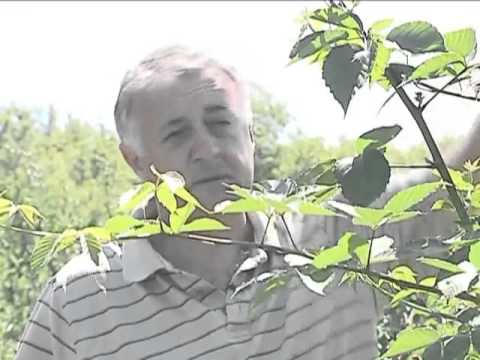

Watch this video on YouTube
Blackberry feeding
Blackberries should be fed at the same time as other berry bushes. At the very beginning of the growing season, plants will need to be fed with organic matter with a high nitrogen content (4 kilograms per 1 square meter of the plot), as well as nitrogen-containing fertilizers (20 grams of urea or ammonium nitrate per 1 square meter). Potash fertilizers should be used those that do not include chlorine, for example, potassium sulfate (40 grams per 1 square meter), such dressings are carried out annually. In the event that you mulch the surface of the site with manure or other organic matter, then you do not need to feed the blackberries with phosphorus. If you do not use this kind of mulch, then you will need to add phosphates to the soil once every 3 years (50 grams of substance per 1 square meter).
Blackberry propagation
Blackberries can be propagated in spring, winter and summer. For propagation of bush varieties, root offspring, dividing a bush or cuttings are used, and for creeping ones - horizontal or apical layers.
Reproduction by apical layers
The easiest way is to propagate blackberries with apical shoots. To do this, in the spring, you should choose a climbing stem, it is bent to the surface of the soil, while the top is buried in earth. In such a layer, roots appear in a relatively short period of time, and young shoots grow from the buds that are in the ground. When this happens, the shoot is separated from the parent bush.
Propagation by horizontal layers
To propagate blackberries with horizontal layers, you should bend the shoot to the soil surface and cover it with soil along its entire length. As a result, several bushes should grow. When this happens, the shoot between the newly grown bushes must be cut. Young plants can be transplanted into a permanent place immediately. This method is most effective in springtime.
Propagate by root suckers
If the plant is bush, then it is easiest to propagate it by root suckers, they grow every year around the bush. Experienced gardeners recommend separating and planting in a new place only those offspring whose height is at least 10 centimeters. In order for the offspring to have time to take root well before the onset of cold weather, their jigging should be done in May or June.


Watch this video on YouTube
Reproduction by dividing the bush
There are varieties of this culture that do not form root suckers. In this case, for their reproduction, the method of dividing the bush is used. The dug out bush should be divided into parts, while taking into account that each of the divisions should be well developed, and it should also be able to take root in a new place. The part of the plant that has an old rhizome must be disposed of.
If we are talking about valuable varieties of such a berry culture, then for their reproduction, as a rule, the cuttings method is used. Cuttings from the upper third of the shoot are cut in June or July. At the same time, each cutting should have a part of the shoot, a bud and a leaf plate.The lower cut should be treated with a preparation that promotes root formation. Then the cuttings are planted in small cups, which need to be filled with a substrate consisting of peat and vermiculite (perlite, crushed expanded clay or sand). The containers are removed under the film, while in an improvised greenhouse, air humidity should be maintained at 96 percent. After about 4 weeks, the cuttings should be rooted and transplanted to a permanent location.
There are other methods of propagation of blackberries, for example, by air layers, root cuttings, seeds and lignified cuttings. However, these breeding methods are not as effective as those described above, and they are also more difficult to perform.
Blackberries in autumn
In the fall, the plants should be prepared for the coming winter. To begin with, the bushes need to be cut. Then the soil surface around the roots will need to be covered with a layer of mulch (dry sawdust or peat). For preventive purposes, the bushes must be sprayed with Aktellik (from pests) and copper sulfate (from diseases). In the event that it is colder than minus 10 degrees in your region in winter, then this berry culture will need shelter. If winter-hardy varieties are grown, then they will be able to withstand frost no more than minus 20 degrees without shelter. You can use several different methods to cover bushes for the winter. So, when the blackberry is cut, it should be removed from the trellis and placed on the soil surface. Then the shoots are covered with a layer of corn foliage from above and covered with a covering material, for example, plastic wrap. If an upright variety is grown, then it will be difficult to bend the branches of such a bush to the ground. In this regard, gardeners in August attach a load to the upper part of the shoots, as a result of this, the branches will gradually bend over to the surface of the soil themselves. The blackberry has one feature, it does not go under cover. In this regard, gardeners often use hay, sawdust, humus or straw as a shelter. It is not recommended to use leaves fallen from fruit trees as a shelter, because pathogenic microorganisms may be present on their surface. It is also recommended to collect and destroy foliage that has fallen from blackberry bushes in the autumn.
Pruning blackberries
Despite the fact that pruning blackberries is a rather laborious procedure, such a crop must be systematically pruned. Pruning of blackberry bushes with pruning shears should be done in spring, summer and autumn. All blackberries are divided into creeping, also called dewberry, and upright-growing - kumanik. The shoot height of straight-growing varieties can exceed 300 centimeters, and many replacement shoots grow in such plants. Fruiting of kumanik is observed, as in raspberries, on two-year-old shoots. Root shoots in most varieties of dewdrop are not formed, the shoots of such a plant are similar to loops on which there are many fruit branches.
How to prune blackberries
In the spring, before the buds of the blackberry awaken, they prune it. So, you need to remove all injured and dried shoots, and also cut off the frost-damaged tops of the stems to the first healthy bud. The bushes of the first year of growth need double pruning. To do this, in order to stimulate the growth of lateral shoots, the upper parts of the branches are shortened by 5-7 centimeters in May. Then, in July, they shorten those lateral shoots by 7-10 centimeters, the length of which is more than 50 centimeters, in addition to this, only 6-8 of the most powerful ones must be left, and the remaining ones must be cut out. In addition to frost-damaged and injured branches, all weak shoots should be cut out in mature plants, while 4 to 10 of the most powerful branches should remain on the bush, it is also necessary to shorten the lateral branches by 0.2-0.4 m, so that they remain 8 to 12 kidneys.During the growing season, cut out all root shoots that have grown in the summer months. Only those root shoots that have grown in spring should remain, since they will bear fruit in the next growing season.
Shoots grown in spring in autumn should be cut at a height of 170-200 centimeters. Weak branches and all shoots of the second year of life that have finished bearing fruit must be cut at the root. The fact is that they will never bear fruit again, and the blackberry will only waste its strength on them.


Watch this video on YouTube
Blackberry pests and diseases with photo
Blackberry diseases
Pests and diseases in raspberries and blackberries are the same. So, blackberries grown in mid-latitude gardens can suffer from tons of rust, powdery mildew, anthracnose, septoria or white spot, from didimella or purple spot, botrytis or gray rot, and also because of an excess or lack of nutrients in the soil. and also if you violate the rules of agricultural technology of this culture.
Blackberry bushes can suffer from columnar or goblet rust. Columnar rust can get on this crop from pines or cedars that grow nearby, while its pathogens are carried by the wind. The pathogens of goblet rust can only appear in a garden located near a reservoir on the banks of which sedge grows. Only weakened blackberries are affected by rust. In infected specimens, in the first summer weeks, brownish-orange dots appear on the surface of the leaf plates, which eventually become pads, and they are located on the underside of the foliage. In the event that the disease is not controlled, then about 60 percent of the crop will be destroyed by it. For preventive purposes, blackberries are sprayed on freshly blossomed foliage with a solution of Bordeaux liquid (1%). A similar treatment is repeated after the crop is harvested from the bushes. By the way, this remedy will help protect plants from many other diseases. Infected bushes should be sprayed with a sulfuric preparation, and for this they choose a warm day (the air temperature should be above 16 degrees). For example, you can use a sulfuric preparation such as a solution of colloidal sulfur, it will relieve not only various fungal diseases, but also ticks and aphids.
Anthracnose
The development of anthracnose is observed in the last days of May or the first days of June, but only if it is rainy, damp weather for a long time. In affected specimens, purple oval specks appear on newly grown young shoots. They increase in size over time and when they reach the tissues of the cortex, then gray ulcers with purple edges appear on it. On the surface of the leaf plates, specks are also formed with a pale red border. In winter, the death of the affected stems is observed. For prevention purposes, purchased seedlings should be thoroughly examined. Also, blackberries require systematic feeding with peat compost and timely weeding. For the prevention and treatment of such a disease, the same drugs are used as in the fight against rust.
Septoriasis
White spot (septoria) - this disease is very widespread. Infected bushes are affected by stems and foliage. Brownish specks form on them, which become lighter over time and acquire a dark border.
Purple spot
Didymella (purple spot) - this disease affects the buds of the plant, and also leads to drying and death of the leaf plates, in some cases the shoot dries up. At the very beginning, small specks of purple-brown color are formed on the middle and lower part of the infected specimen.As the disease develops, the kidneys become blackened, the leaf plates become fragile, and necrotic spots of a dark color with a yellow border appear on their surface.
Botrytis
Gray rot (botrytis) also prefers wet weather. In the affected specimen, fruits rot. For prevention purposes, it is not recommended to grow blackberries in cramped conditions; they need good ventilation.
Powdery mildew
Most of all, blackberry bushes can suffer from spheroteka (powdery mildew). In an infected plant, the surface of foliage, berries and stems is covered with a loose bloom of white color.
To fight all these diseases should be the same drugs as during the fight against rust. It should also be remembered that a strong plant is very rarely affected by various diseases. Therefore, try to follow all the rules of agricultural technology for this crop and provide it with proper care.
In some cases, yellowing of blackberry bushes is observed. Most often this is due to an excess or insufficient amount of trace elements. In this case, you need to adjust the feeding schedule, as well as analyze the composition of all fertilizers used.
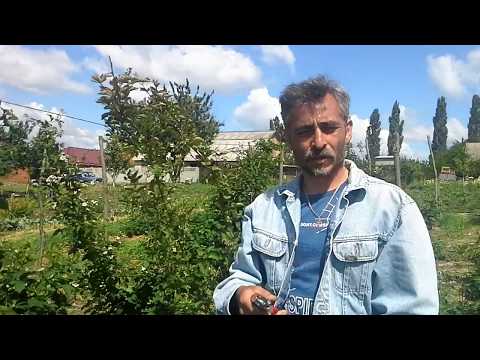

Watch this video on YouTube
Blackberry pests
Blackberry bushes can accommodate: ticks (spiderweb and hairy raspberry), raspberry kidney moth, raspberry-strawberry weevil, raspberry beetle, nutcracker, as well as aphids, gall midges and caterpillars of butterflies - fireflies, raspberry glass cases. To get rid of these pests, experts advise using Karbofos or Aktellik, you can also process it with Akarin or Fitoverm. To protect the bramble from the attacks of various pests, in the spring, before the buds open and in the autumn, after picking the berries, spraying should be done for prophylaxis, while using the same drugs (see above).
Blackberry varieties with photos and descriptions
Above, it was described what are the differences between creeping and upright blackberry varieties. However, modern varieties cannot be subjected to strict classification, since blackberry varieties and hybrids in some cases successfully combine the characteristics of creeping varieties (called for convenience a dewberry) and the features of upright varieties (conventionally referred to as kumanika).
The best blackberry varieties:
- Agave... This American variety is one of the oldest, it is mid-season and has very high frost resistance. So, blackberry fruit buds are injured only at a temperature of minus 27 degrees, while its root system and shoots are able to withstand a temperature drop to minus 40 degrees. Powerful faceted stems are strongly prickly, the weight of the fruit reaches 3 grams. This variety is high-yielding, on average 4 kilograms of berries are harvested from 1 bush. These plants are resistant to stem cancer, rust and anthracnose.
- Thornfree... This thornless hybrid plant was born a relatively long time ago, but to this day a large number of gardeners are happy to grow it. This variety is early maturing, high-yielding, frost-resistant enough, unpretentious to growing conditions. This plant combines the properties of both dew grass and kumanik.
- Karaka Black... This variety appeared relatively recently, it is ultra early ripe, but such a plant ends bearing fruit with the onset of frost. The shape of large fruits is elongated, their weight reaches 20-30 grams. The fruits have excellent taste, as well as high juiciness and sugar content. This variety is one of the most resistant to drought, it is not afraid of any diseases, there are a small number of thorns on well-bending shoots. However, it should be remembered that this variety has low resistance to frost.


- Natchez... The variety is early maturing. The fruits are very large, they have a unique cherry flavor. There are no thorns on the shoots.This variety has appeared quite recently thanks to American breeders of the state of Arkansas.
- Polar... This Polish variety is highly frost-resistant and does not need to be covered for the winter. Compact bushes are quite productive. Large fruits have a pleasant sweet and sour taste.
- Waldo... This high-yielding frost-resistant variety was developed in England. Bushes are compact, miniature, they do not need much space, and they practically do not need shaping pruning. The fruits begin to sing from the second half of July.
- Loch Tei... This variety is also bred in England. It is unpretentious to growing conditions. Small fruits have high palatability. On average, about 2 buckets of fruit are collected from one bush.
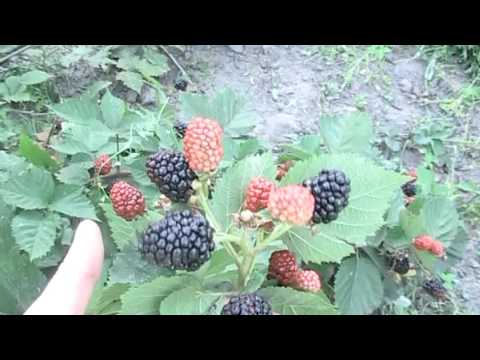

Watch this video on YouTube
Repaired blackberry varieties
The remontant varieties have appeared relatively recently; therefore, they are poorly studied. Their fruiting continues until the first frost. If you cut off all the stems from the bushes in late autumn, then next year it will still be possible to harvest from them, the fact is that the fruits will grow on the shoots that have grown at the beginning of the spring period. The first harvest is harvested in June, and the fruits of the second harvest will begin to ripen in August. In some cases, continuous fruiting of such bushes is noted. The disadvantage of these varieties is the very sharp thorns. During flowering, such a blackberry looks very impressive, for example, the diameter of its flowers can reach from 7 to 8 centimeters. The most popular are the varieties of remontant blackberries belonging to the American hybrids of the Prime series:
- Prime Arc 45... This variety was born in 2009. Plant height is about 200 centimeters. On the surface of powerful straight stems there are a large number of thorns. The dense, elongated fruits are very sweet. The first berries grow in June. The second time the plant begins to bear fruit in August, and ends with the onset of the first frost.
- Prime Yang... This variety is the earliest of all remontant varieties. The stems are prickly erect. Sweet, elongated, medium-sized, dense fruits have the smell of apples.
- Prime Jim... The variety was born in 2004. Powerful straight stems are prickly. Large sweet and sour fruits are elongated. The flowering plant, covered with light pink buds and large white flowers, looks very impressive.
Blackberry properties: harm and benefit
Useful properties of blackberries
Blackberry fruits contain a large amount of vitamins, namely: carotene (provitamin A), vitamins C, E, P and K. They also contain minerals: sodium, calcium, potassium, phosphorus, magnesium, copper, iron, chromium, molybdenum, barium, vanadium and nickel. They also contain a large amount of glucose, fiber, fructose, pectins, and organic acids such as tartaric, citric, malic and salicylic acids. Such fruits help to improve metabolic processes in the body and strengthen the immune system, they have an antioxidant and antipyretic effect. Blackberries are considered a natural substitute for aspirin, but unlike a drug, the fruits not only do no harm to the body, but also heal it. Such a berry is recommended for use by people suffering from diseases of the gastrointestinal tract, since it has a beneficial effect on the work of the digestive system. Also, blackberries have long and rather successfully been used in the treatment and prevention of diabetes mellitus and urolithiasis. The juice squeezed out of young foliage and fruits of blackberries is used for tracheitis, bronchitis, pharyngitis, sore throat, fever, gynecological diseases, dysentery and colitis. This juice is also used externally for the treatment of dermatoses, eczema, wounds, trophic ulcers and gum disease.
For medicinal purposes, both berries and other parts of the plant are used.For example, leaf plates contain a large amount of vitamin C, tannins and amino acids. In this regard, they differ in astringent, anti-inflammatory, diuretic, wound-healing, diaphoretic and blood-purifying effect. An infusion from the foliage of this plant is taken for nervous disorders and heart diseases. Tea and a decoction from the foliage are used for anemia, and also as a general tonic and sedative for climacteric neurosis. A decoction of the foliage is used for gastritis. Fresh foliage is used to treat lichen and chronic ulcers on the lower extremities.
The roots of such a culture are used to prepare a diuretic for dropsy. And the tincture made from them is used for bleeding and to improve digestion.
Contraindications
Blackberries do not have any contraindications. However, in rare cases, a person may experience individual intolerance, expressed in allergic reactions. Signs of this intolerance may appear after a few minutes or days after eating blackberries. Symptoms are as follows: diarrhea, nausea, vomiting, and mucosal edema.


Watch this video on YouTube

